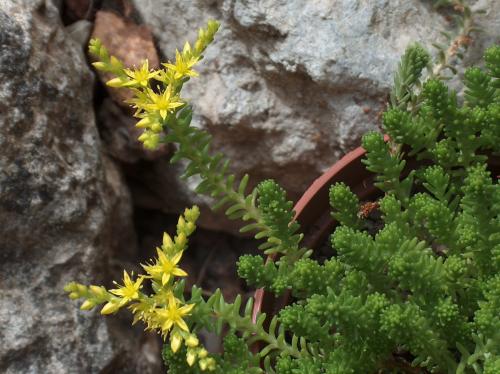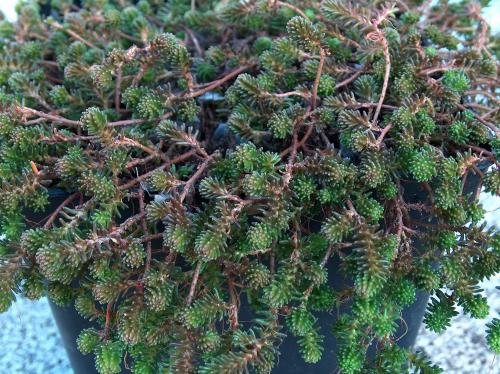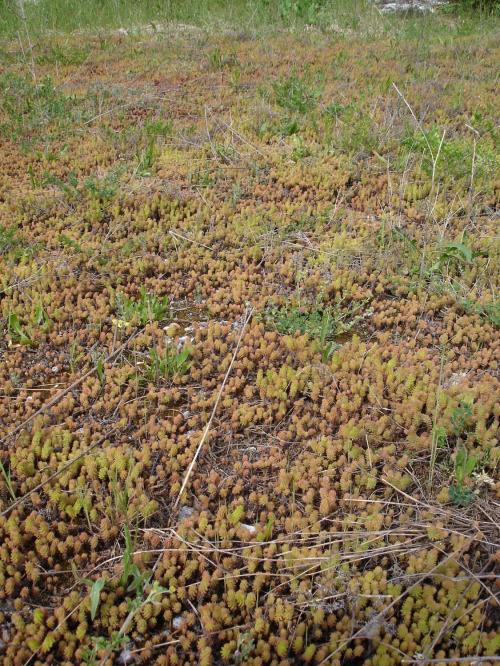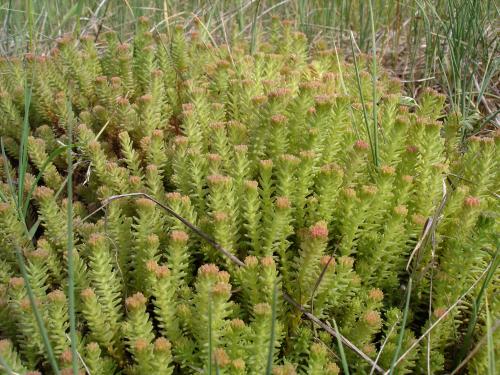SEXANGULARE L., 1753
Synonyms :
Sedum acre var. sexangulare (L.) Godron (1848)
Sedum mite Gilibert (1782)
Sedum boloniense Loiseleur (1810) / Sedum sexangulare var. boloniense (Loiseleur) Fenzl (1856) / Sedum sexangulare ssp. boloniense (Loiseleur) J.A.Huber (1936)
Sedum schistosum Lejeune (1811)
Sedum spirale Haworth (1825)
Sedum boloniense var. minor Wirtgen (1857) / Sedum sexangulare fa minor (Wirtgen) Soó (1966)
Sedum boloniense var. parviflorum R.Uechtritz (1881) / Sedum sexangulare fa parviflorum (R.Uechtritz) Soó (1966)
Sedum sexangulare ssp. montenegrinum Horák (1898) / Sedum sexangulare var. montenegrinum (Horák) Hayek (s.a.) / Sedum montenegrinum (Horák) R.L.Evans (1983)
Sedum tschernokolevii Stefanoff (1965)
Distribution : Mainly central, southern and south-eastern Europe, extending locally to central France, central Italy, south-western former Yugoslavia and the western borders of Russia, doubtfully native to Fennoscandia and very rare in northern Greece.
Description (according to 't Hart & Bleij in IHSP 2003) :
Laxly caespitose perennial herbs forming mats of rooting and ascending non-flowering shoots.
Leaves alternate, densely imbricate, on non-flowering shoots usually in 6 rows, cylindrical to linear, spurred, 3-6 mm, bright green.
Inflorescences : Flowering branches 6 - 15 cm, inflorescences moderately lax cymes with (1-) 2 - 3 (-4) sometimes forked cincinni, bracts 2 per flower.
FIowers 5- or rarely 6-merous, subsessile, sepals broadly sessile, unequal, linear-elliptic, obtuse, petals 4 - 6 mm, acute or acuminate, bright yellow, filaments yellow, anthers yellow.
Cytology: 2n = 74, 111, 148, 185.
The species belongs to the comparium of Ser. Alpestria A. Berger ('t Hart 1991).
Plante en culture / plant in cultivation (origine inconnue / origin unknown), 14 juin 2010 :

Plante en culture / plant in cultivation, 23 février 2012, collectage / collected by Marko Doboš, Sjeverni Velebit National Park, Croatia. Alt. env. 750 m :

Photos Eric Barbier
Plantes in situ / plants in habitat : Village Vranić (Croatia), between mountains Papuk and Psunj. This is a place where pure quartz sand is exploited, 14 mai 2011, alt. 220 m :

